
Daniel Hudson Burnham, was an American architect and urban designer. A proponent of the Beaux-Arts movement, he may have been, "the most successful power broker the American architectural profession has ever produced."

The World's Columbian Exposition was a world's fair held in Chicago in 1893 to celebrate the 400th anniversary of Christopher Columbus' arrival in the New World in 1492. The centerpiece of the Fair, held in Jackson Park, was a large water pool representing the voyage Columbus took to the New World. Chicago had won the right to host the fair over several other cities, including New York City, Washington, D.C., and St. Louis. The exposition was an influential social and cultural event and had a profound effect on American architecture, the arts, American industrial optimism, and Chicago's image.

Kenilworth is a village in Cook County, Illinois, United States, 15 miles (24 km) north of downtown Chicago. As of the 2010 census it had a population of 2,513. It is the newest of the nine suburban North Shore communities bordering Lake Michigan, and is one of those developed as a planned community. In 2018, Kenilworth was the eighth wealthiest community in the United States, and the wealthiest in the Midwestern United States.
The year 1892 in architecture involved some significant events.

The buildings and architecture of Chicago reflect the city's history and multicultural heritage, featuring prominent buildings in a variety of styles. Most structures downtown were destroyed by the Great Chicago Fire in 1871.
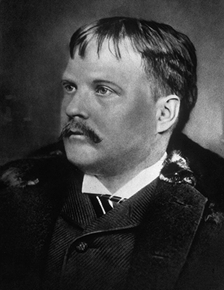
John Wellborn Root was an American architect who was based in Chicago with Daniel Burnham. He was one of the founders of the Chicago School style. Two of his buildings have been designated a National Historic Landmark; others have been designated Chicago landmarks and listed on the National Register of Historic Places. In 1958, he was posthumously awarded the AIA Gold Medal.

Prairie School is a late 19th- and early 20th-century architectural style, most common in the Midwestern United States. The style is usually marked by horizontal lines, flat or hipped roofs with broad overhanging eaves, windows grouped in horizontal bands, integration with the landscape, solid construction, craftsmanship, and discipline in the use of ornament. Horizontal lines were thought to evoke and relate to the wide, flat, treeless expanses of America's native prairie landscape.

The Reliance Building is a skyscraper located at 1 W. Washington Street in the Loop community area of Chicago, Illinois. The first floor and basement were designed by John Root of the Burnham and Root architectural firm in 1890, with the rest of the building completed by Charles B. Atwood in 1895. It is the first skyscraper to have large plate glass windows make up the majority of its surface area, foreshadowing a design feature that would become dominant in the 20th century.
This is a list of the 129 National Register of Historic Places listings in Cook County, Illinois outside Chicago and Evanston. Separate lists are provided for the 62 listed properties and historic districts in Evanston and the more than 350 listed properties and districts in Chicago. The Chicago Sanitary and Ship Canal Historic District extends through the West Side of Chicago, DuPage County and Will County to Lockport.

Solon Spencer Beman was an American architect based in Chicago, Illinois and best known as the architect of the planned Pullman community and adjacent Pullman Company factory complex, as well as Chicago's renowned Fine Arts Building. Several of his other largest commissions, including the Pullman Office Building, Pabst Building, and Grand Central Station in Chicago, have since been demolished. Beman designed numerous Christian Science churches and influenced the design of countless more.

Burnham and Root was one of Chicago's most famous architectural companies of the nineteenth century. It was established by Daniel Hudson Burnham and John Wellborn Root.

D.H. Burnham and Company was an architecture firm based in Chicago, Illinois. As successor to Burnham and Root, the name was changed once John Root died in 1891. Root was the chief consulting architect for the World's Columbian Exposition. After Root's death, Daniel Burnham took that title along with his old title of Chief of Construction.
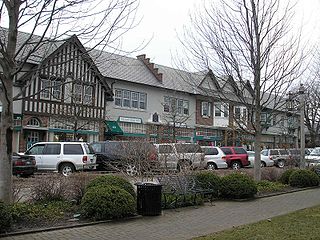
Howard Van Doren Shaw AIA was an architect in Chicago, Illinois. Shaw was a leader in the American Craftsman movement, best exemplified in his 1900 remodel of Second Presbyterian Church in Chicago. He designed Marktown, Clayton Mark's planned worker community in Northwest Indiana.

Willoughby James Edbrooke (1843–1896) was an American architect and a bureaucrat who remained faithful to a Richardsonian Romanesque style into the era of Beaux-Arts architecture in the United States, supported by commissions from conservative federal and state governments that were spurred by his stint in 1891-92 as Supervising Architect of the U.S. Treasury Department.
Franklin Pierce Burnham was an American architect. He is best known for his collaborations with Willoughby J. Edbrooke, especially the 1889 Georgia State Capitol. Burnham was also named the Kenilworth Company Architect for Kenilworth, Illinois, and thus designed several of the planned community's original structures. After 1903, Burnham focused his works on California, including a series of twelve Carnegie libraries. Five of his buildings are today recognized by the National Park Service on the National Register of Historic Places, including the Georgia State Capitol, a National Historic Landmark.
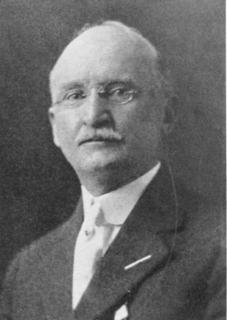
Frank Kimball Root (1856–1932) was a music publisher in Chicago and the proprietor of Frank K. Root & Co. His father, Ebenezer Towner Root, co-founded Root & Cady. Among the many notable songs published by the firm is "I Ain't Got Nobody".
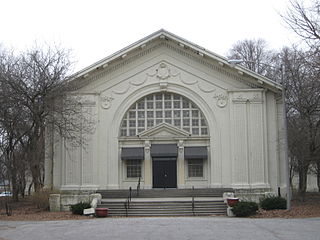
Trumbull Park is a public park at 2400 E. 105th Street in the South Deering neighborhood of Chicago, Illinois. The South Park Commission opened the park in 1907 as part of its efforts to bring parks to dense immigrant neighborhoods with little green space. The park's fieldhouse and other facilities were not completed until the 1910s; around this time, the park was officially named for Lyman Trumbull, a United States Senator from Illinois who co-wrote the Thirteenth Amendment. While the park and its facilities were designed in-house by the South Park Commission, they were inspired by the designs of landscape architects the Olmsted Brothers and architecture firm D. H. Burnham and Company used in many of the South Park Commission's other parks. The fieldhouse in particular has a Beaux-Arts design which calls back to Burnham's work for the 1893 Columbian Exposition.
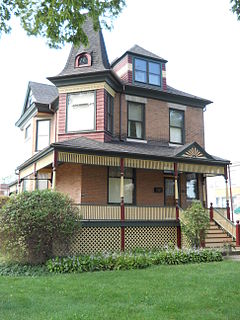
The Harry H. Nichols House is a historic house at 216 S. 4th Avenue in Maywood, Illinois. The house was built in 1894 for Harry H. Nichols, the former postmaster of Maywood and the son of village founder William T. Nichols. It was designed in the Queen Anne style, which was popular in the late nineteenth century; along with the Jacob Bohlander House, it is one of two large, formal Queen Anne homes in Maywood. The house's design includes a wraparound front porch with a balustrade, a gable with a sunburst design above the entrance, a projecting gabled bay on its south side, and a rectangular tower at its southeast corner. Neoclassical elements such as urns, columns, and cornices adorn its interior; these were most likely inspired by the architecture of the recent Columbian Exposition.

The Caroline Grow House is a historic house at 603 N. 6th Avenue in Maywood, Illinois. The house was built circa 1902 by Caroline Grow, whose late husband David bought the house's plot in 1875. It has an American Foursquare design, a utilitarian style which was popular in the early twentieth century. The 2+1⁄2-story house has a rectangular form with a front porch supported by four columns and a hip roof with a central dormer, a typical layout for a Foursquare home. The design also includes Neoclassical details such as the Doric capitals on the porch's columns; these were common in Chicago-area architecture after the 1893 Columbian Exposition popularized the style.

The Mr. J. William de Coursey O'Grady House is a historic house at 149 Kenilworth Avenue in Kenilworth, Illinois. The house was built on speculation as part of the Kenilworth Company's initial development in 1898; original owner J. William de Coursey O'Grady did not buy the house until 1901. Architect Franklin Pierce Burnham, the company architect for the Kenilworth Company, designed the Neoclassical house; Burnham had previously designed the Georgia State Capitol and the Kane County Courthouse. While Neoclassical architecture was popular in commercial and government buildings, especially in the years following the 1893 Columbian Exposition, it was not commonly used in houses, and there are few other examples of the style in Kenilworth. The house's design includes a symmetrical facade, four Ionic pilasters, a dentillated architrave and cornice, and a pediment above the entrance.




















